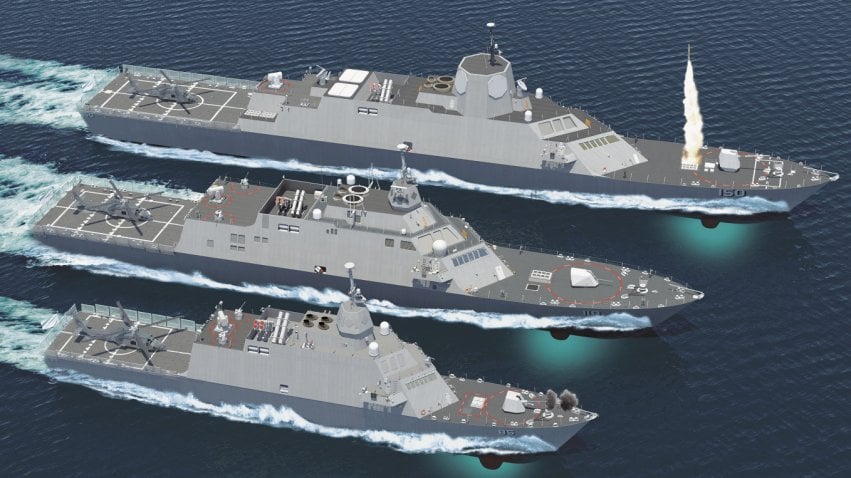
The Navy has outlined its next steps in an Pentagon mandated efforts to create a new type of ship to follow the 32 planned Flight 0 Littoral Combat Ships, according to a March 13 letter signed by Chief of Naval Operations Adm. Jonathan Greenert and Sean Stackley, the Navy’s chief weapons buyer.
The new Small Surface Combatant Task Force — made up of equal parts Office of Chief of Naval Operations (OPNAV) and Naval Sea Systems Command (NAVSEA) personnel — will generate a side-by-side comparison between the 1980s vintage Oliver Hazard Perry class frigates and the current crop of LCS to create a baseline for requirements for the new unnamed combatant.
The task force — overseen by John Burrow, executive director of the Marine Corps Systems Command — will then present three options to Navy leadership to evaluate which are:
- A modified design of an existing LCS.
- Existing ship designs.
- A new ship design.
Along with the analysis, the task force will include requirements of the ship’s sensors and weapon systems, cost, timetable and an evaluation of the ship’s ability to take on air, surface and undersea threats.
The task force will also be supplied an “affordability target,” to flesh out the study, due to Greenert and Stackley in July.
The LCS was originally designed to fill in gaps in the Navy for anti-submarine warfare, small boat threats and replace aging mine countermeasures (MCM) ships with modular systems that could be easily swapped out.
The Navy had offered full-throated public support for the LCS concept until a decision in the upper echelons of the Pentagon capped the Flight 0 ships at 32 hulls — a reduction of 20 ships.
Secretary of Defense Chuck Hagel in February directed the Navy to instead to , “submit alternative proposals to procure a capable and lethal small surface combatant, consistent with the capabilities of a frigate.”
The likelihood of the service choosing an entirely new ship design is slim as the service is in the midst of an affordability crunch in its shipbuilding accounts.
The service has started work on a new large surface combatant, a new amphibious warship and the Ohio-class Replacement Program (ORP) for a new nuclear ballistic missile submarine.
The $100 billion, 12 boat ORP program alone threatens to pull away billions of dollars from surface ship programs making the prospect of an entirely new ship design remote.
Both LCS makers, Austal USA and Lockheed Martin, have scaled-up versions of their ship designs they’ve pitched for international markets, while shipbuilder Huntington Ingalls Industries (HII) has long offered a grey-hull version of the Legend-class National Security Cutter (NCS) as a frigate design.
Those ships as well as several other international ship designs— including the Aegis capable Spanish F-100 frigate — are likely to be in consideration by the task force.





